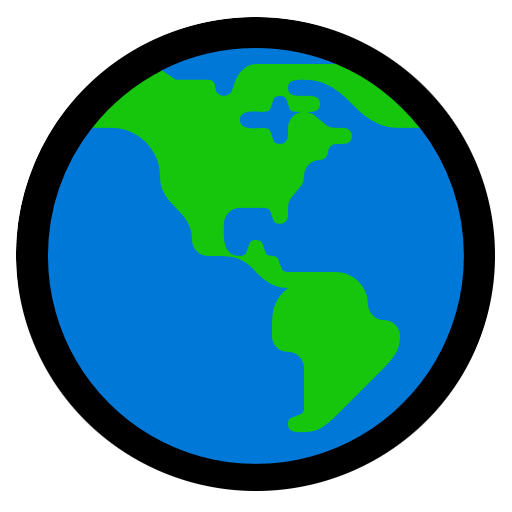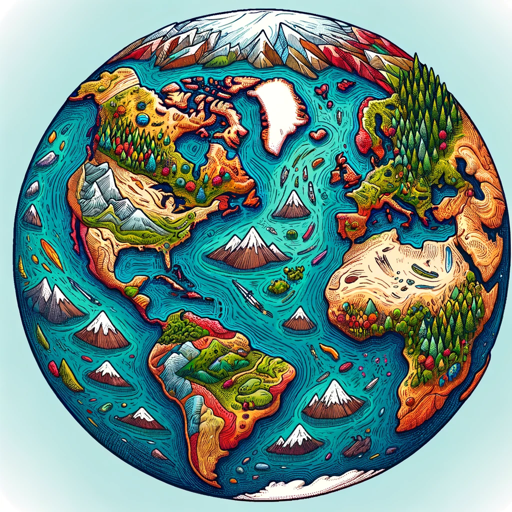Geo+-Geospatial Data Visualization
AI-powered Geospatial Insights
Help Guide
Related Tools
Load More
Geography Geo
🔷#𝟏 𝐏𝐞𝐫𝐬𝐨𝐧𝐚𝐥𝐢𝐳𝐞𝐝 𝐆𝐞𝐨𝐠𝐫𝐚𝐩𝐡𝐲 𝐓𝐮𝐭𝐨𝐫🔷

EarthGPT - Maps, Satellite Images, Geography
Explore planet earth using maps and satellite images right within ChatGPT.

Geology Guide
Geology Guide: Advanced AI for Geology, developed on OpenAI

GeoGPT
A scholarly geography resource with extensive knowledge from books and papers.

Geology GPT
Explore geology's secrets with Geology GPT, your personal guide to Earth's wonders!

Geo Guesser
A visual analysis expert who guesses image locations.
20.0 / 5 (200 votes)
Introduction to Geo+
Geo+ is designed to assist geospatial specialists in visualizing and interpreting geospatial data effectively. Its primary functions include generating maps, geocoding locations, displaying various map styles, and providing high-resolution satellite imagery. By integrating the AGEO MAP API, Geo+ offers a powerful toolset for analyzing geographical information and supporting decision-making processes. For instance, urban planners can use Geo+ to visualize population density in different areas, while environmental scientists might employ it to monitor changes in vegetation over time.

Main Functions of Geo+
Map Generation
Example
Creating a map centered on a specific location with various zoom levels and styles.
Scenario
A city planner needs a detailed map of a downtown area with markers indicating new construction sites. Using Geo+, they generate a high-resolution map in 'hybrid' style to present in a planning meeting.
Geocoding
Example
Converting addresses into geographic coordinates and plotting them on a map.
Scenario
A logistics company wants to optimize delivery routes. They input a list of customer addresses into Geo+, which geocodes the locations and visualizes them on a map, allowing the company to plan efficient routes.
Satellite Imagery
Example
Displaying high-resolution satellite images of specific areas.
Scenario
An environmental researcher is studying deforestation in the Amazon. Using Geo+, they access recent satellite imagery to analyze areas where forest cover has diminished.
Ideal Users of Geo+ Services
Urban Planners
Urban planners can use Geo+ to visualize and analyze city infrastructure, plan new developments, and monitor urban growth. The ability to generate detailed maps and integrate various data layers helps in making informed decisions.
Environmental Scientists
Environmental scientists benefit from Geo+ by accessing high-resolution satellite imagery and vegetation data. This is crucial for monitoring environmental changes, assessing the impact of human activities, and supporting conservation efforts.

Steps to Use Geo+
Visit aichatonline.org for a free trial without login, also no need for ChatGPT Plus.
Navigate to the website to access the free trial of Geo+ without the requirement for login or a premium subscription.
Access the AGEO MAP API documentation
Review the API capabilities and request parameters to understand how to interact with the service.
Set up your environment
Ensure you have the necessary tools and environment ready, such as a JSON editor and a tool to make API calls (e.g., Postman).
Formulate your API request
Prepare a detailed API request with the required parameters like address, zoom level, style, markers, and any specific place type or administrative layers.
Submit and visualize your data
Send your API request and visualize the generated map or data as per the response from the AGEO MAP API.
Try other advanced and practical GPTs
Codie
AI-powered assistance for every need.

POD Niche Digger by MerchArts
Discover Niche Opportunities with AI Power

Your German lawyer
AI-powered legal insights for German law.

Linkediinn Connection Message Editor
AI-powered LinkedIn message generator

Power Point Deck Master
AI-Powered Presentation Creation Tool

Deep Faker
Create hilarious deepfakes with AI!

SimilariGPT
AI-powered research assistant for precision results.

TCM Study Buddy
AI-powered Traditional Chinese Medicine Guide.

A friendly atheist
AI-powered discussions on atheism and ethics.
Artistic Prompt Crafter
AI-powered hyperrealistic image prompt creator

CODY - Crypto Strategy Assistant
AI-powered assistant for crypto trading strategies

Entity Analyst GPT
AI-powered tool for interpreting entities in queries

- Geocoding
- Satellite Imagery
- Population Data
- Administrative Boundaries
- Building Footprints
Detailed Q&A about Geo+
What is Geo+?
Geo+ is a tool designed to help geospatial specialists visualize and interpret geospatial data effectively using the AGEO MAP API.
What types of maps can Geo+ generate?
Geo+ can generate various types of maps including roadmap, satellite, hybrid, terrain, build, sentinel, vegetation, population, and railway maps.
How can I add markers to the map?
You can add markers to the map by providing an array of latitude and longitude coordinates or by specifying a list of addresses in the API request.
What are the administrative boundaries features in Geo+?
Geo+ allows displaying administrative boundaries at country (admin0), region (admin1), and local (admin2) levels to facilitate detailed geospatial analysis.
Can I use Geo+ for satellite imagery?
Yes, Geo+ supports high-resolution satellite imagery and vegetation display (NDVI) from satellite data, allowing for detailed environmental and land use analysis.